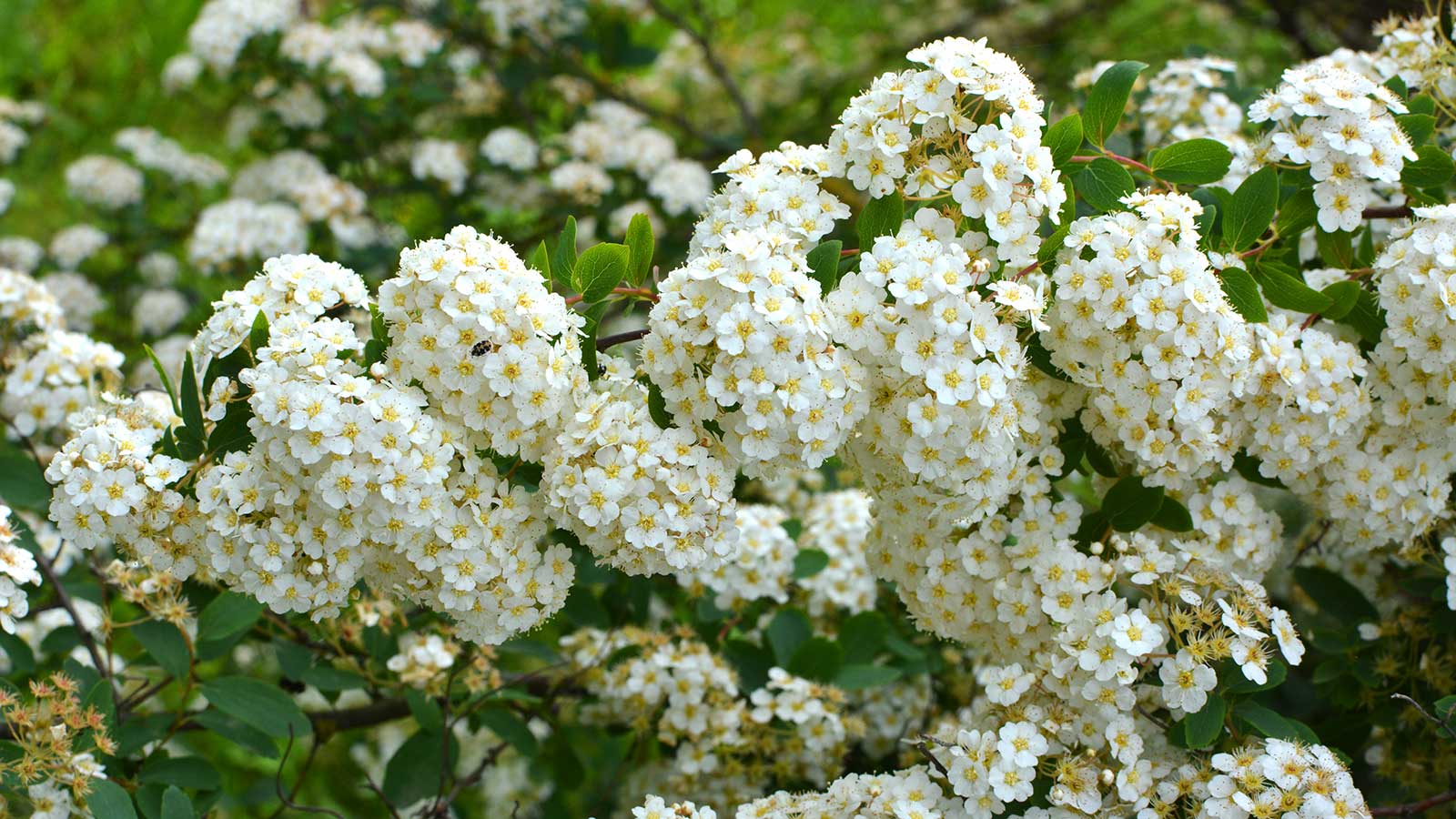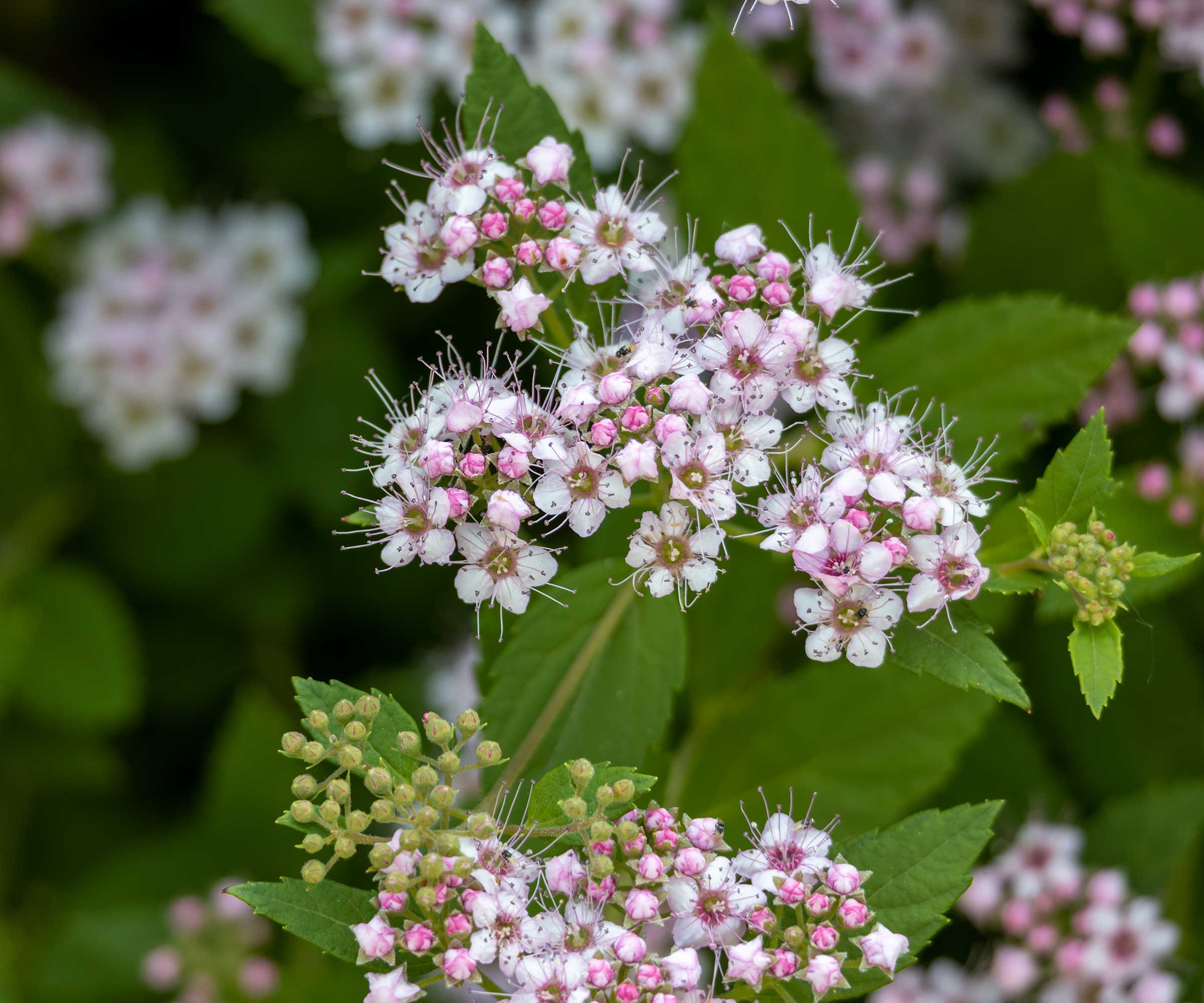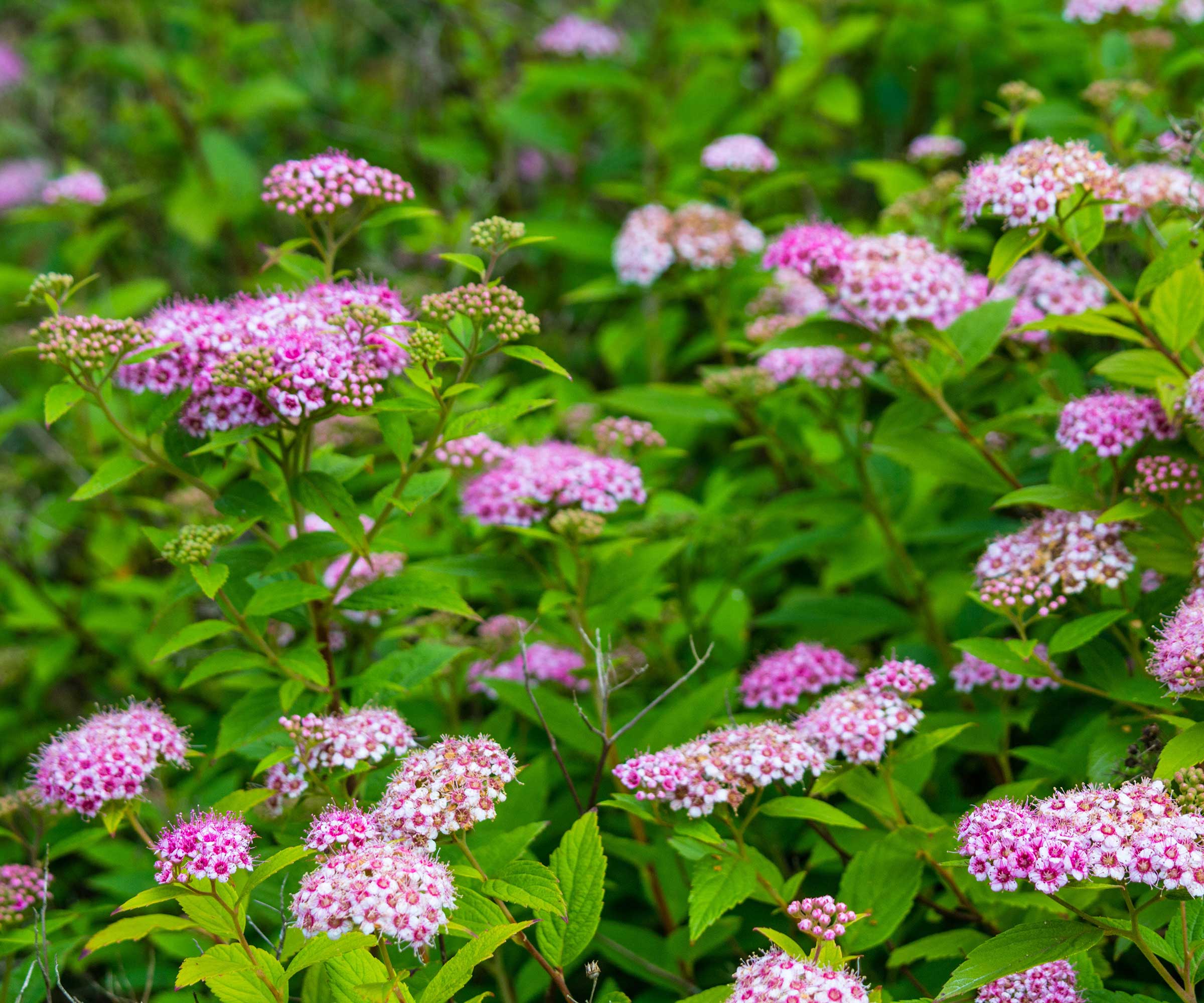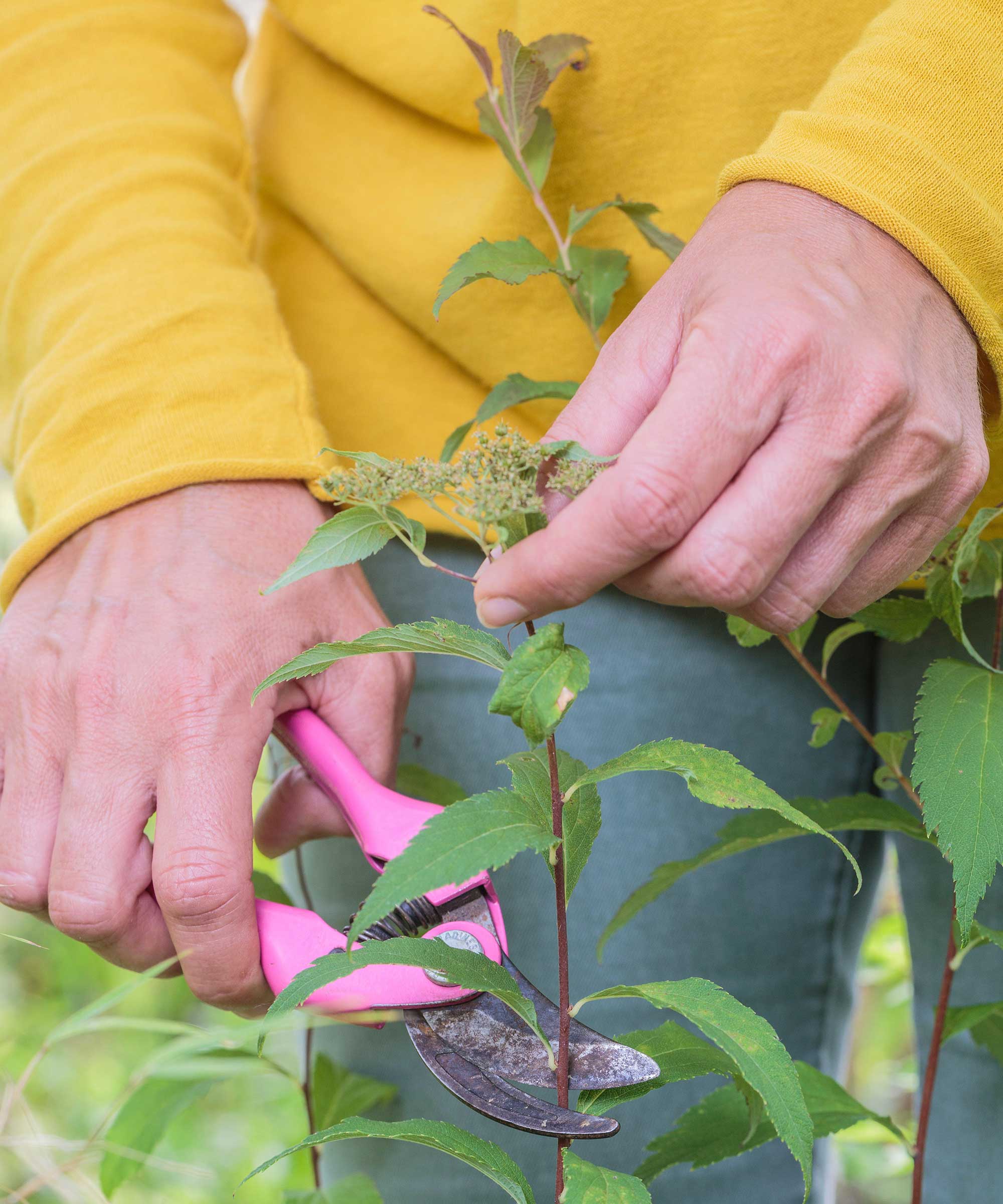
Spirea, or spiraea, are popular perennial shrubs with pretty blooms in spring and summer. They're generally low-maintenance, but now and again, these plants benefit from a prune.
Spirea tend to get tangled and congested over time, which can spoil their good looks and increase the risks of disease. A good prune counteracts this as it opens up the structure, improving airflow and allowing more sunlight in, while giving the plants a tidier appearance. Pruning can also encourage new growth of foliage and flowers.
To put it simply, cutting these flowering shrubs back will result in happier, healthier, better-looking plants – if you go about it in the right way. But before you start snipping, it's important to know the proper technique, and that's where this guide will help.

How to prune spirea
You can use sharp and clean pruners or sturdy loppers to prune your spirea. Always cut back to a leaf node, bud, or branch junction where possible, at a 45-degree angle.
'Cut off any dead or damaged branches, or any branches that haven't flowered in recent years,' says Anna Ohler, the Owner of Bright Lane Gardens nursery.
You can then make cuts to thin out the structure. 'Selectively remove a few of the older, thicker stems near the base of the plant,' instructs Brock Ingham, the Owner of Bigger Garden.
Finally, use your pruning tool to shape the plant to the desired form. 'Trim back any excessively long or unruly branches to maintain a compact and tidy appearance,' Brock says.
'Be careful not to prune too heavily, as this can reduce the plant's flowering potential,' he adds – overdoing it is a common pruning mistake. 'Aim to remove no more than one-third of the overall growth in a single pruning session.'
'Be sure to clean up any trimmings around the base of the plant when you are done,' advises Anna. Leaving this debris can result in rot or fungus on the stem and lower branches of the shrub.

When to prune spirea
'Pruning once a year will greatly improve the overall health of the shrub,' says Anna. However, the right time to do so depends on the type of plant you have.
Summer-blooming varieties, such as 'Anthony Waterer' or 'Goldflame', bloom on new wood (the current season's growth), Brock says. Deadhead the blooms once they've faded, then give the plants a proper prune in late winter or early spring, when they're dormant.
'Spring-blooming spirea, such as 'Bridal Wreath' or 'Vanhouttei', bloom on old wood (last season's growth),' he continues. Healthy stems should be pruned immediately after the shrub has flowered – any earlier, and you can risk losing the blooms. Dead or diseased branches, however, can be removed from this type of spirea in late winter to early spring if necessary.

Aside from annually pruning your spirea, these shrubs require very little attention. As they're drought-tolerant once established, they only need a spot of water during very dry periods. Feeding isn't usually necessary, and most are winter hardy. In other words, they're a great backyard addition for busy gardeners – plus, it's easy to make new plants for free by taking cuttings.







